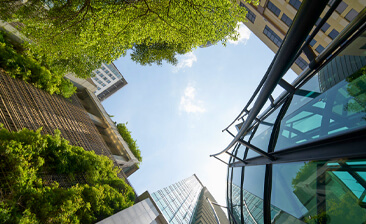
Acea for World Energy Saving Day
“Good morning Antonio, say Hi! to the bees”. This is what many say to Antonio Barletta when he goes to San Vittore for one of his regular visits to the apiary. Antonio Barletta is a specialist in urban beekeeping and in 2020 he came up with the idea of Urbees and presented it to Acea Ambiente. The project consisted in installing three beehives near the plant to conduct a biomonitoring study in the surrounding area. . In 2023 the bees produced 40 kg of honey, confirming the healthiness of the air in the area.
Biomonitoring is a method that allows to check the environmental quality of an ecosystem by observing the creatures that are introduced into it.
From the beekeeper’s idea to the Urbees collaboration project. The proposal was an immediate success and triggered the curiosity of engineers like Claudia Lena and Ilir Dhima who work at the plant. They found the idea of demonstrating good air quality using an innovative monitoring system very interesting. “We enthusiastically embraced the Urbees project running it side by side with the standard monitoring activities we normally carry out”, says Ilir Dhima, Manager of the Plant in San Vittore del Lazio.
Bees are chosen as bioindicators among insects because they turn their hives into real environmental control systems. Bees repeat the same behavior every day: they leave the hive to explore the area, then return bringing back all the precious information they collected (attached to the hairs on their legs and on their wings) from the places they explored.
Claudia Lena, Business & Process Transformation Acea Ambiente
The beekeeper started by finding a suitable place for the hives, where the bees could thrive, to ensure the feasibility of the study while protecting the species. Then, Acea Ambiente and Antonio Barletta got a third technical partner involved in the Urbees project: professor Negri from the Catholic University of Milan, an entomologist renowned for her studies on bees.
Following a preliminary study of the San Vittore area and the colony of bees living near the plant, the University set the guidelines of the biomonitoring study, from how the hives should be treated to the type of samples that should be collected.
Tests are carried out once per month at the Catholic University of Milan’s laboratories and involve the so-called foraging bees, in charge of leaving the hive to collect the pollen, nectar and water the colony needs.
As established in the past by standard environmental tests, the biomonitoring confirmed that the systems within the plant retain emissions and do not release them externally.
The project has demonstrated that no dust on the bees’ wings can be traced back to emissions from the plant. “Researchers at the University are familiar with the morphology of the particles created by high combustion processes. If these tests do not show the same morphology and chemical composition, we can safely say that there are no dusts from the combustion process of our plant on the bees’ wings” Claudia explains.
“During this time, we have learned a lot about a world that was unknown to us. We were told that if bees don’t like the area they are living in, they move in search of places with more food and different environmental conditions. We are delighted that the San Vittore bees have chosen to say with us!”, say Claudia and Ilir.
The Urbees project started in mid-2020: the hives were installed at the end of May and honey was collected in August. The collaboration was due to end in November, but Acea has extended it. “The project was so well received that plans are being made to replicate it using the same methods, where possible, in the other Acea Ambiente plants” says David Giacanelli, Business Development Acea Ambiente.
In 2023, 40 kg of honey were produced, divided into three types: "41-flower honey," "34-flower honey," and "46-flower honey," containing as many botanical species. Analyses on the samples of the honey produced revealed a total of 83 different plant species, from which a high index of floral biodiversity could be calculated.
In San Vittore del Lazio everyone has become fond of the bees, who will be taken care of and will continue to work not just for the plant, but for the entire surrounding area, in their role as biodiversity promoters.
Urbees is the subject of a reportage shot by the documentary photographer Giuseppe Nucci. “When I heard the words bees and waste-to-energy plant together I thought that this was not an ordinary story, but a story I needed to tell. Through my lens, I chose to show that a lot can be done to keep the world existing as we know it.
Discover the latest news and initiatives of the Acea Group

Acea for World Energy Saving Day

Visit the virtual museum about the history of the Acea Group

The channel for the commercial requests on land urbanisation

Acea turns the spotlight on the Rome Film Festival 2023

Acea is in the "Gold class" in the .trust research

Read more about our culture of inclusiveness